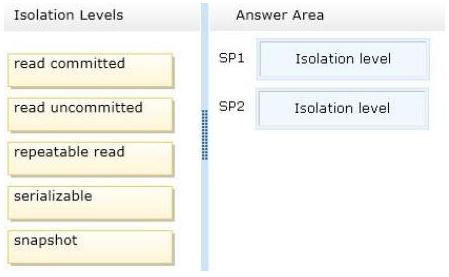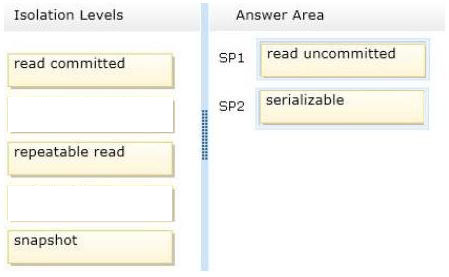

DRAG DROP -
You plan to deploy two stored procedures named SP1 and SP2 that read data from the database.
Your company identifies the following requirements for each stored procedure:
✑ SP1 must allow dirty reads.
✑ SP2 must place range locks on the data to ensure read consistency.
You need to identify which isolation level you must set for each stored procedure. The solution must minimize the number of locks.
Which isolation level should you identify?
To answer, drag the appropriate isolation level to the correct stored procedure in the answer area. (Answer choices may be used once, more than once, or not at all.)
Select and Place:

Kepty
4 years, 7 months ago